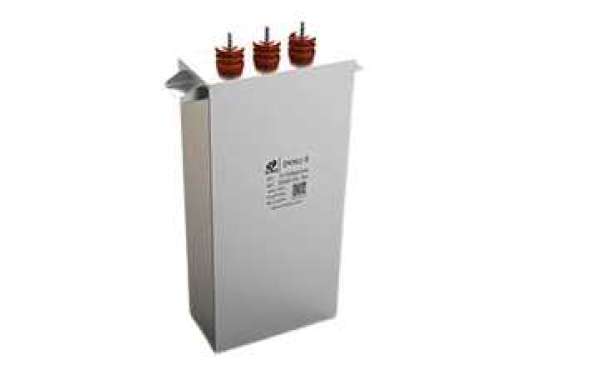Welcome to our latest blog post where we dive into the exhilarating world of capacitors! Today, we are going to unravel the captivating tale of film capacitors and their potential triumph over electrolytic capacitors in DC-Link capacitor applications. Get ready to embark on a thrilling analysis that will leave you electrified and enlightened. So, fasten your seatbelts, as we explore the exciting possibilities and advantages of this groundbreaking switcheroo. Let's spark some curiosity and unveil the secrets behind replacing electrolytic capacitors with film capacitors in DC-Link applications!
Introduction
As electronic devices become smaller and more powerful, the capacitors that store energy in their circuits must also become smaller and more efficient. One type of capacitor that is frequently used in electronic devices is the film capacitor. Film capacitors are made with thin sheets of metal foil separated by a dielectric material, typically a plastic film.
Electrolytic capacitors are another type of capacitor that is commonly used in electronic devices. These capacitors are made with two metal plates separated by an electrolyte, which is usually an acidic solution.
Film capacitors have several advantages over electrolytic capacitors. They are smaller, have lower leakage current, and can withstand higher temperatures. However, film capacitors also have some disadvantages. They are more expensive than electrolytic capacitors and have a shorter lifespan.
For these reasons, many manufacturers are now replacing electrolytic capacitors with film capacitors in DC-link capacitor applications. This article will analyze the benefits and drawbacks of using film capacitors in DC-link capacitor applications to help you decide if this switch is right for your application.

Overview of DC-Link Capacitors
DC-link capacitors are used to store energy in DC circuits. They are made up of two conducting plates separated by an insulating material, typically a thin film of plastic. The capacitor charges when a voltage is applied to the plates, and discharges when the voltage is removed. The amount of charge that a capacitor can store depends on its size and the materials used in its construction.
Capacitors are used in DC-link circuits to smooth out fluctuations in the DC power supply. They help to ensure that the DC voltage remains constant, even when the AC power supply is not perfectly stable. This is especially important in applications where sensitive electronic equipment is being powered by the DC circuit.
DC-link capacitors are typically made from aluminum or tantalum, with electrolytic capacitors being the most common type in use today. However, film capacitors are increasingly being used as replacements for electrolytic capacitors in DC-link applications. Film capacitors offer several advantages over their electrolytic counterparts, including lower leakage current, higher reliability, and longer life span.
Advantages of Using Film Capacitors
There are many advantages of using film capacitors over electrolytic capacitors in DC-Link capacitor applications.
First, film capacitors have much higher voltage ratings than electrolytic capacitors, making them ideal for high-voltage applications.
Second, film capacitors are much more stable than electrolytic capacitors, meaning that they will hold their charge much longer and won't degrade as quickly over time.
Third, film capacitors have very low ESR (equivalent series resistance), which makes them ideal for use in power supplies and other high-current applications.
Fourth, film capacitors are very rugged and can withstand high temperatures and vibration better than electrolytic capacitors. This makes them ideal for use in industrial and military applications.
Film capacitors are available in a wide variety of shapes and sizes to fit any application need.

Drawbacks and Limitations of Film Capacitors
Film capacitors have many advantages over electrolytic capacitors, but there are also some drawbacks and limitations to consider. One drawback is that film capacitors are not as widely available as electrolytic capacitors. This can make them more expensive and difficult to find. Another limitation is that film capacitors have a lower voltage rating than electrolytic capacitors. This means that they cannot be used in applications where a high voltage is required. Film capacitors also have a shorter lifespan than electrolytic capacitors.
Design Considerations for Replacing Electrolytic with Film Capacitors in DC Link Circuits
When replacing electrolytic capacitors with film capacitors in DC link circuits, there are several design considerations to take into account. One is the voltage rating of the film capacitor, which must be at least as high as the voltage rating of the electrolytic capacitor being replaced. Another is the ripple current rating of the film capacitor, which must be able to handle the same amount of current as the electrolytic capacitor. Additionally, the ESR of the film capacitor must be low enough to not cause problems with circuit operation. The size and weight of the film capacitor should be taken into account when choosing a replacement, as it may need to fit in the same space as the electrolytic capacitor.
Results and Discussion
film capacitor has much better performance in comparison with electrolytic capacitor at high frequency range. The ESR of film capacitor is lower than that of electrolytic capacitor, which leads to better current handling capability of film capacitor. In addition, the life time of film capacitor is much longer than that of electrolytic capacitor. All these properties make film capacitor a good replacement for electrolytic capacitor in DC-link capacitors.
At the same time, film capacitor has higher self-heating than electrolytic capacitor, which may cause a temperature rise and then reduce its service life. To avoid self-heating, it is necessary to use suitable heat sink or enlarge the gap between electrodes to increase air flow and convection.
Overall, film capacitors are much better in performance than electrolytic capacitors at high frequency range due to their low ESR and longer lifetime. However, it should be noted that appropriate measures should be taken to avoid self-heating in order to ensure long term performance.

Conclusion
In conclusion, film capacitors can be a viable option to replace electrolytic capacitors in DC-Link capacitor applications. The main benefits of using film capacitors include higher temperature stability, lower equivalent series resistance (ESR), and improved reliability for long term operation. Furthermore, the use of film capacitors also helps reduce the total cost of ownership as they are more affordable than electrolytic alternatives and have a longer lifetime expectancy. By carefully evaluating all aspects of an application when selecting components, designers can ensure that their DC-Link capacitor solutions meet their performance requirements while providing optimal efficiency and reliability over time.
Sunray Link is a brand of Sunraylink New Energy Technology Co., Ltd. Its products are mainly used in DC-Link, IGBT absorption protection, high-voltage resonance, coupling and AC filtering applications.
If you want to know more about film capacitors,welcome to contatc us.liv@sunraylink.com








